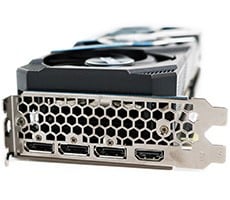Image Quality: Anti-Aliasing & CSAA
As we've already mentioned, the G80 GPU at the heart of the GeForce 8800 GTX and GTS cards offers new anti-aliasing modes courtesy of the Lumenex Engine. With the G80, NVIDIA designed an anti-aliasing engine that employs a proprietary algorithm called Coverage Sampling Anti-Aliasing (CSAA). Unlike some older multi-sampling techniques, Coverage Sampling Anti-Aliasing uses intelligent color and Z sample information to perform anti-aliasing while reducing the load placed on the memory system. With CSAA, NVIDIA raised the total number of samples that could be taken per-pixel to 16, as opposed to 4 on the G71.
|
|
|
To see how the GeForce 8800 GTX performed in regard to anti-aliasing, we fired up Half Life 2 and captured a few screen-shots at the various anti-aliasing modes available. We also did the same with a GeForce 7900 GTX and a Radeon X1950 XTX. Please pay special attention to the labels and the file names when clicking through the images above though, as only the 4X anti-aliasing shots will represent an apples-to-apples-to-apples comparison between the three cards.
If you flip through the shots, the first thing you're likely to notice is a slight rendering bug on the 8800 that causes a problem with the lighting on some of the building and trees. We're confident this will be fixed in a future driver release so we won't dwell on it. What's more important to focus on are the gradients on the cables that span the top of the screen, and the fine details in the antennas atop the buildings. As the AA levels are increased, the GeForce 8800 GTX does a great job of reducing the jaggies, and 8800 also seems to better preserve some fine detail.




















